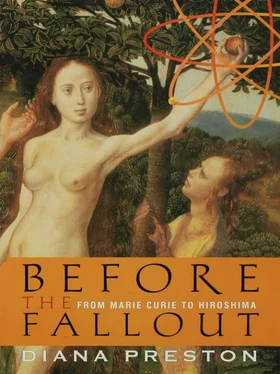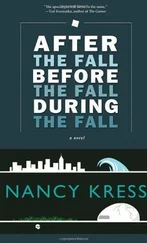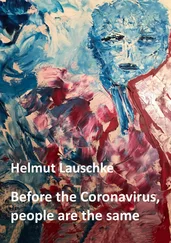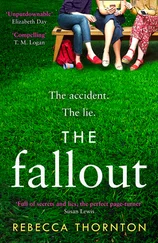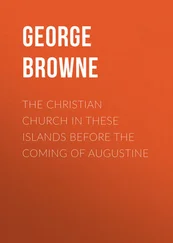• • •
Einstein, who privately nicknamed the 1911 Solvay Conference “a witches’ sabbath,” found it more enjoyable than he had anticipated. He wrote to a friend that he spent “much time” with Marie Curie and Paul Langevin. He was “just delighted with these people” and praised Marie’s “passionateness” and “sparkling intelligence.” As was about to emerge in a thundercloud of scandal, one reason for Marie’s animation was that she and Langevin were in love. This did not, however, soften her insistence at the conference that the International Radium Standard she had prepared should remain chez moi —in other words, in her personal laboratory and under her sole control. When others argued that this was unacceptable, she retreated to her room, once again claiming nervous exhaustion and headaches. Critics claimed her ailments were psychosomatic, and even Rutherford’s patience was wearing thin. He wrote that “Madame Curie is rather a difficult person to deal with. She has the advantages and at the same time the disadvantages of being a woman.” He told her firmly that an international standard should not be “in the hands of a private person.” Marie would later back down, personally sealing the radium standard in a glass tube and depositing it at the International Bureau of Weights and Measures at Sevres, near Paris.
At the conference, though, such squabbles were pushed aside as the sensational “Affaire Langevin” broke in the press. The Paris newspaper Le Journal reported that Paul Langevin’s wife, Jeanne, was accusing him of having an affair with the forty-three-year-old Marie Curie and intended to divorce him. Newspapermen ambushed Marie in Brussels, thrusting copies of Le Journal at her. At first she refused to comment; then, in a handwritten note to the Brussels correspondent of the Paris Le Temps, she rebutted the accusations as “pure fantasy.” However, other papers enthusiastically took up the story. Le Petit Journal titillated its readers with a story headlined “A Laboratory Romance—The Adventure of Mme. Curie and M. Langevin.” It included an interview with Jeanne Langevin in which she claimed that the affair had been going on for several years. She had kept quiet about it, hoping for a reconciliation, but her husband’s recent behavior—including slapping her face for spoiling a fruit compote—had forced her to speak out.
The story broadened. Some suggested that the affair might have started before Pierre Curie’s death, even that it had prompted him to commit suicide. One journalist used the scandal to attack not just Marie’s morals but her credibility as a scientist, querying whether women were capable of creative, independent research. He quoted an eminent but conveniently unnamed scientist, who claimed she was a mere “plodder” and that a woman could only shine in science when “working under the guidance and inspiration of a profoundly imaginative man” with whom she was in love.
Returning to Paris, Marie Curie continued to deny the affair, seeking refuge from the press with friends. However, the allegations were almost certainly true. In mid-July 191 o Langevin is known to have rented an apartment near the Sorbonne under an assumed name. He and Marie Curie were observed meeting there almost daily. In early 1911 friends had noticed how Marie had suddenly appeared dressed in white with a rose at her waist, rather than in her usual somber hues. One wrote that “something signified her resurrection like the spring, following a frozen winter.” Paul Langevin was five years her junior, handsome, charismatic, and an acknowledged ladies’ man. He would later father a child by one of Marie Curie’s pupils. He had married very young, and the relationship had soured early. He had turned for advice and solace to Marie. An old friend, she considered Langevin a genius, but weak and in need of affection. She feared his wife would force him to desert science in favor of going into industry to make money.
Letters between Marie Curie and Paul Langevin were stolen, probably by Langevin’s brother-in-law, Henry Bourgeois, who pried open a drawer in Langevin’s marital home. There is evidence that Langevin paid blackmail money—given him by Marie—to try and prevent the letters’ disclosure. Marie lent Langevin a total of five thousand francs—more than a tenth of her salary—over this period, and Langevin made “loans,” never recorded in writing, to his brother-in-law. Marie’s friend Jean Perrin wrote angrily of “odious blackmail.”
In November 1911, while the scandal still raged, came news that Marie Curie had been awarded a second Nobel Prize—this time for chemistry—for her original isolation of pure radium. It was an unprecedented honor, but the press attacks continued. Some contained darker undercurrents than mere simulated moral outrage. Only five years after the end of the Dreyfus Affair, [11] The Dreyfus Affair was a notorious French miscarriage of justice in which anti-Semitism played a major part. Jewish army officer Alfred Dreyfus was wrongly convicted of passing military secrets to Germany and imprisoned on Devil’s Island. His conviction was eventually overturned after a long campaign led by writer Emile Zola.
they reminded readers that Marie was a foreigner and suggested incorrectly that she was probably a Jew. They demanded she resign from the Sorbonne and return to Poland. Matters finally came to a head when Gustave Tery, editor of the weekly L’Oeuvre, published extracts from the Curie-Langevin letters and derided “the Vestal Virgin of radium” as “an ambitious Pole who had ridden to glory on Curie’s coat-tails and was now trying to latch onto Langevin’s.”
Langevin challenged Tery to a duel. He told a friend, “It’s idiotic, but I must do it.” It proved more farcical than dramatic. Dressed in black and wearing bowler hats, the duelists met at the Pare des Princes Bicycle Stadium. Tery, as the man who had been challenged, was entitled to raise his weapon first but kept his gun pointed to the ground while he gazed up at the sky. Unable to shoot a man who had not discharged his weapon, Langevin also lowered his. They left the field, honor satisfied. Tery wrote piously, “The defence of Mme. Langevin does not oblige me… to kill her husband…. I could not deprive French science of so precious a brain.” With this ridiculous encounter, public interest waned, although the Affaire Langevin provoked at least four further duels between defenders and detractors of Madame Curie.
A subdued and frail Marie Curie went to Stockholm to claim her Nobel Prize. She collapsed on her return to Paris with fever and kidney problems, but her health picked up when she learned that Madame Langevin’s writ formally seeking separation from her husband did not name her. However, henceforth her relationship with Langevin could, sensibly, be only professional. Einstein, who had remarked on Marie’s passion in 1911, observed a change while hiking with her in 1913. He wrote that “Madame Curie is highly intelligent but has the soul of a herring, which means that she is poor when it comes to the art of either joy or pain. Almost the only time she shows emotion is when she’s grumbling about things she doesn’t like.”
• • •
Rutherford had loyally supported Marie Curie throughout the brouhaha. He was by then deeply involved in further attempts to dissect the atom, in the aftermath of his finding of the nucleus. Shortly after his return from the Solvay Conference, a twenty-six-year-old Danish physicist had joined his team at Manchester. Niels Bohr was about to bring quantum theory to the heart of the understanding of the atom. Bohr was an athletic, strong-jawed, huge-handed man with an enormous domed forehead. He spoke in long, complex sentences studded with subclauses in a voice that was usually soft and trailed off into a whisper when he came to a crucial point. He belonged to a distinguished family—his father was professor of physiology at the University of Copenhagen. Like Rutherford, Bohr showed an early interest in understanding how things worked, and one of his boyhood pleasures was repairing clocks. Also like Rutherford, he was a lateral thinker, quick to spot connections. He was gentle but intellectually tenacious and unfraid to challenge anyone, however high their reputation.
Читать дальше
